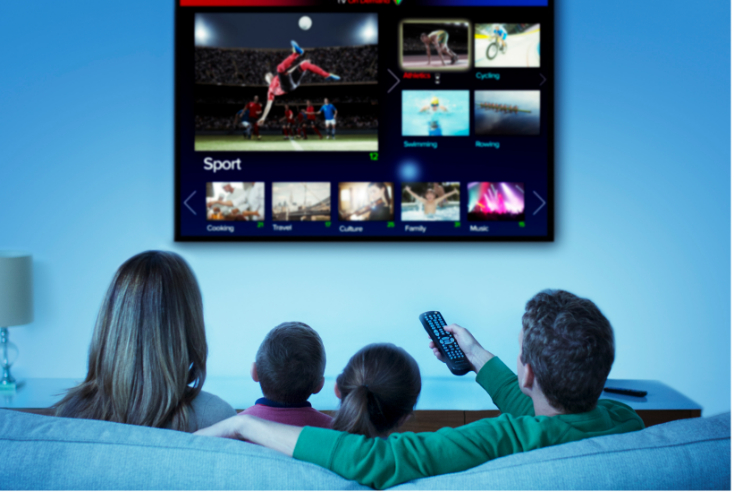It’s not perfect yet but addressable TV can be game-changing

Opinion
Rather than focus on what we want connected TV to be, let’s look at what it currently excels at.
You hear it all the time: connected TV represents the advertising holy grail. CTV provides the best of TV’s big screen branding power, coupled with all of digital media’s precision and targeting. What could be better?
Then, you hear all the reasons why this holy grail is so elusive. You hear the measurement isn’t quite there, or the technology is still far from where it needs to be… but due to viewer behaviour, there are necessary and effective applications that can enhance and complement business as usual TV campaigns.
Many brands and agencies are striving for elusive perfection in the execution of CTV advertising.
They want to run campaigns through one demand-side platform. They hope for some universal identification techniques or perfect data-matching solution, but it’s just not realistic right now, or in any near future.
CTV is merely an Internet-enabled means by which to watch content, so the content itself doesn’t come from one all-seeing source.
Broadcasters, new apps, YouTube, and more are all part of the addressable TV inventory pot that’s bubbling with opportunities for savvy marketers and modern media buyers.
Agile approach or bust
Embracing a more cross-platform approach to TV advertising is how the media industry unlocks the power of addressable TV.
Media buyers must be agile to realise the full targeting and performance potential of TV – to be in front of a viewer at their convenience, around quality content and how they want to watch TV.
We need to employ a different approach to what is ultimately a new TV any way consumers want it advertising medium.
Respect the fact this is TV (ensuring the consideration of content is as above), and then, recognise it can be supercharged by the power of digital.
You’ll find there are effective targeting methods that can be employed to pull this world together and make the most of the new capabilities right now.
I’m not advocating for marketers to cut off traditional TV or saying that the medium is the place where every single viewer can receive a perfectly customised and targeted ad every time they flip on the TV.
However, brands and agencies striving for the aforementioned perfection must consider every TV endpoint.
Before they fully utilise the burgeoning digital side of this medium, they must acknowledge that they are sometimes missing out on opportunities to talk to harder-to-target traditional TV unreachables, which actually still use the TV screen, but through streaming and Internet-based means.
There are highly scientific, strategic ways to employ addressable TV at scale that can make a major difference in a brands’ business today.
We just need to get past this idea of what we think CTV should be able to do and examine where it already excels.
CTV may be complicated, but it is also unique
Alas, as many of us are experiencing, even as CTV is growing exponentially, it’s already become quite fragmented and complex.
Media companies, TV manufacturers, streaming device makers, as well as legacy programmatic firms are all staking a claim – and many of these contenders have their own ad technology and unique data assets.
CTV is also fundamentally unique when compared to classic TV and digital media. Co-viewing is common, and accelerated through the pandemic.
While some viewers are ‘logged in’ or identifiable when streaming their favourite shows, many are not, and others share accounts. Thus, one-to-one targeting is inherently challenging.
Which is why today, we have a range of third-party research firms and technology start-ups scrambling to find new ways of tracking these cross-platform viewing behaviours.
Unsurprisingly, no one firm has got it completely figured out, but there are a number that are close and shedding all important light on the opportunities that exist.
The audiences are there – and so are the tools
While measurement is often cited as a reason to delay moving forward with CTV, here’s one thing that all companies and researchers agree on – audiences are shifting.
The numbers are undeniable. Ofcom data shows that only 32% of time spent with video content by 16–34-year-olds in 2021 came from broadcast TV. What’s more is this is down from 50% in 2017, so the momentum of travel has been quite dramatic.
The good news is there is scale in CTV that can help offset this decline in traditional content viewing, as long as marketers appreciate that viewers don’t actually care about the platforms by which they view.
Addressable TV only realises its potential when we as an industry buy agnostically. Buyers must monitor the viewing behaviour everywhere, with all the tools at their disposal, and be willing to place ads on the TV screen in front of quality content at the viewers convenience.
Fragmented viewership should dictate buying strategies, not complex buying mechanisms, or a preferred choice of DSP.
In almost all instances, being beholden to limited point solutions can become a limiting factor, severely constraining both audience and quality.
This means finding ways to pull together broadcasters, new CTV suppliers and other tech platforms, like YouTube, as long as the due diligence is done around the standard of the content.
The marketers that move forward with a cross-platform strategy, utilising all the advanced tools at their disposal, will be far ahead of the curve as more targeting options emerge, and even more sophisticated creativity arrives.
Developing these muscles and this expertise today will have a huge payoff.
 James Cornish is vice president, international sales at Vevo.
James Cornish is vice president, international sales at Vevo.




